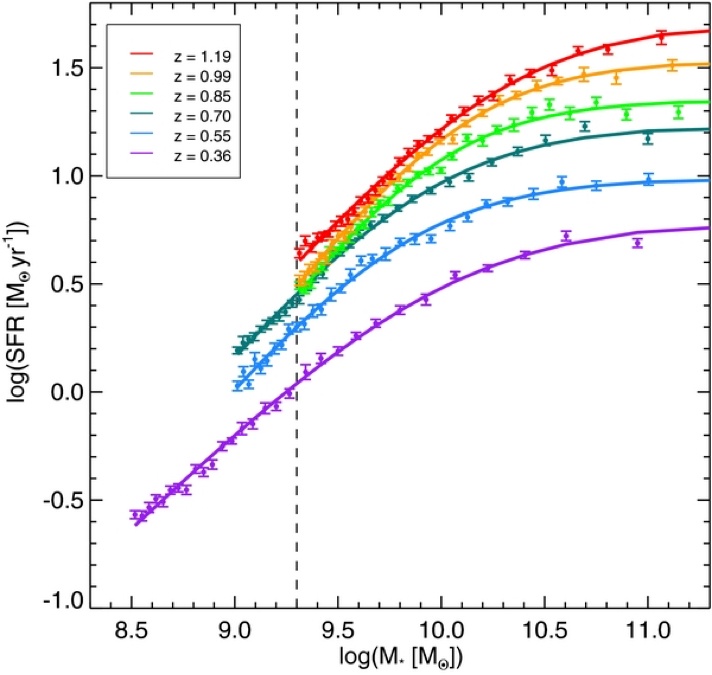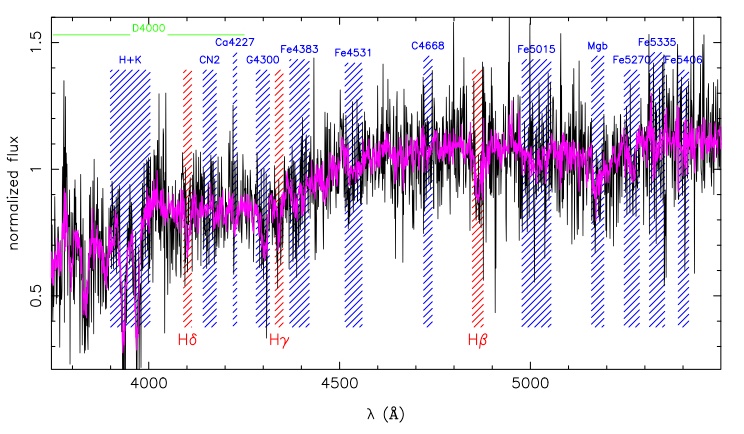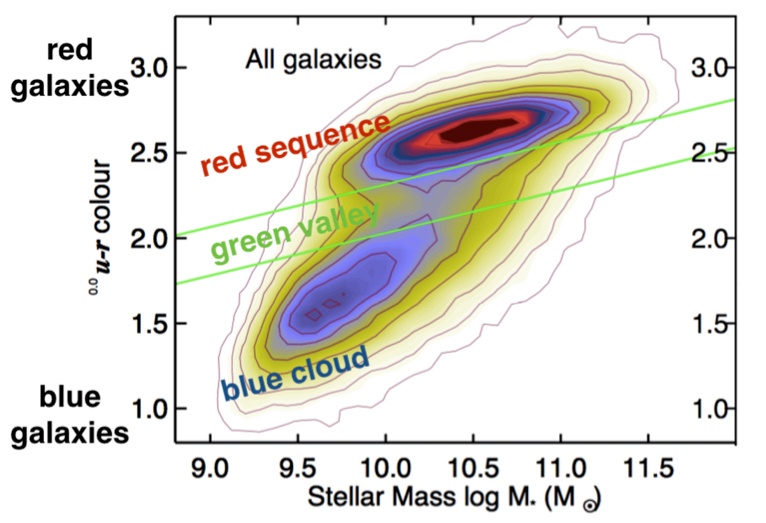Stellar Populations at intermediate redshifts Survey (StePS)
Team Lead: Angela Iovino - Deputy Lead Amata Mercurio
Survey Working Group members: Amata Mercurio & Angela Iovino
Quality Assurance Group members: Marcella Longhetti, Stefano Zibetti, Francesco La Barbera, Marco Gullieuszik & Lorenzo Morelli
One of the major goals of extragalactic astrophysics is to understand the physical processes that cause the formation and evolution of luminous structures.
Recent surveys such as SDSS and GAMA have made ground-breaking progress in the low-redshift Universe in describing how the main galaxy properties vary with both galaxy mass and host halo mass. However, detailed observations of the evolutionary changes of galaxy properties as a function of look-back time are needed to establish which mechanisms dominate galaxy evolution, what drives the star formation history of galaxies and their mass assembly (Fig. 1).
Scientific aims
Shallow spectroscopic observations can provide galaxy redshifts, rough measurements of emission lines and a reliable estimate of the D4000 break, but detailed information on the stellar and gas content of galaxies can only be achieved through deep spectroscopy providing reliable measurements of the absorption features in the stellar continuum.
None of the existing large surveys of distant galaxies have the adequate resolution and spectral quality/range to derive the stellar population properties in sufficient detail for statistically large samples of galaxies in different environmental conditions (Fig.2).
StePS aims to perform a full spectral analysis for a large sample of galaxies at intermediate redshifts, similar to what the SDSS has done in the local Universe.
StePS will derive galaxy stellar ages, star-formation timescales, stellar and gas metallicities, and dust attenuation, and will infer the past evolution of galaxies at different masses and redshift, relating their star formation histories to their intrinsic (e.g., stellar mass, galaxy morphology) and environmental properties. These spectra will also provide gas kinematics and stellar velocity dispersions, which will allow us to perform a dynamical classification of our galaxies and make a link between star formation history, mass assembly history and dynamics.
The goal of StePS is to address the following questions:
- What physical mechanisms drive the star formation histories of galaxies and its quenching over two thirds of the life of the Universe?
- What is the role of environment vs. intrinsic galaxy properties in this evolution?
- How do galaxies assemble their mass during the last 7 Gyr?
Observational strategy
StePS will carry out a MOS survey of ~25,000 galaxies, over four areas on the sky for a total of ~25 square degrees. Targets are drawn from a magnitude-limited sample with IAB<20.5 and pre-selected from high quality photometric redshifts to be at z>0.3, except for the COSMOS field where no photo-z pre-selection is applied. The vast majority of the sample will therefore be in the redshift interval 0.3<z<0.7. The magnitude limit of the selection corresponds to a logarithmic stellar mass limit of 10.2 at z=0.3, 11.0 at z=0.5 and 11.3 at z=0.7, for a Chabrier IMF.
This large sample will enable us to explore galaxy evolution in a sufficient number of bins of different galaxy masses, galaxy morphologies/colours, environments and cosmic epochs.
Using WEAVE’s LR mode (R~5000) we will obtain spectra with high enough signal-to-noise (typical S/N ∼ 10Å−1) over a broad wavelength range to undertake a detailed analysis of the underlying stellar populations and of the emission line properties of these faint galaxies. This requires exposure times of between 7 and 14 hours.







